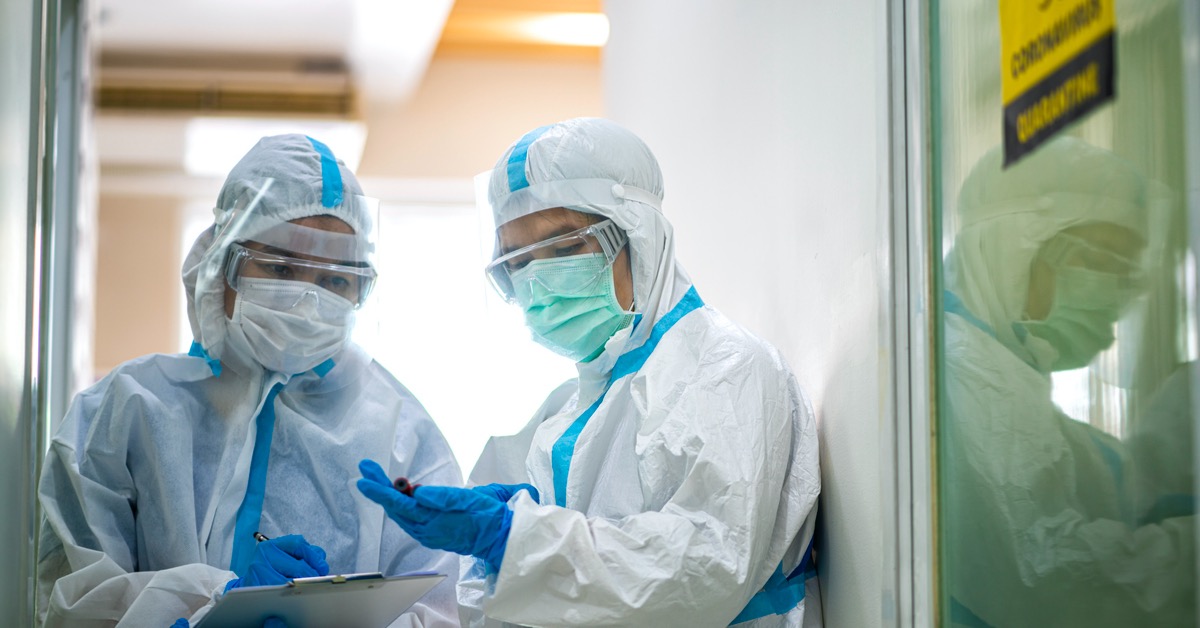
Since the pandemic, the average person is a little more aware of biohazardous materials and the importance of disposing them safely. But for people who work in high-risk industries, the threat of biohazards is part of a standard workday. Knowing what is considered a biohazard and how to handle/dispose of the material ensures their own and the community’s safety.
What is a Biohazard?
A biohazard is a biological substance that threatens human or animal health. The biological substance can include pathogenic microorganisms, viruses, toxins, spores, fungi and io-active substances. Biohazards can appear in any environment.
If biohazardous substances aren’t remediated properly, they can cause an unsafe environment. Specialist biohazard remediation specialists are used to clean areas that may be contaminated with bacteria and hazards, medical waste, pathological waste, animal or human blood and body fluids or microbiological waste. A biohazard can occur anywhere - hospitals, doctors’ surgeries, homes, shopping centres, workplaces and aged care facilities.
Biohazard Symbol
Most adults in the developed world can recognise the biohazard symbol as a warning of a potential exposure to a hazardous substance. The bright orange symbol was developed in the United States by Charles Baldwin, an environmental-health engineer at the Dow Chemical Company in 1996. The orange or yellow symbol is used internationally on labelling of biological material that contains (or may contain) a health risk.
Examples of Biohazards
Biohazardous waste products include infectious waste, animal waste, used sharps, discarded vaccines, and pathological waste.
#1 Infectious Waste
Infectious waste includes blood, used contaminated Personal Protective Equipment (PPE) and IV tubing plus any cultures or laboratory equipment that may be contaminated with an infectious disease.
#2 Animal Waste
Biohazardous animal waste includes any animal body part, carcass or bedding of an animal that has been infected with or inoculated against pathogenic microorganisms that are infectious to humans.
#3 Sharps
Sharps are any objects that may cut or puncture the skin, which could be contaminated with a biological material. They must be disposed of in a sharps container that is puncture, leak and spill proof.
#4 Pathological Waste
Pathological waste is any human body part, tissue or organ that may have been removed during surgery, biopsy or autopsy.
#5 Human Blood and Body Fluid
Human blood and blood products including serum, plasma, and blood components in liquid or semi-liquid form plus body fluids and tissue containing blood, are biohazardous.
Some of these bodily fluids include cerebral spinal fluid, amniotic fluid, pericardial fluid, semen, faeces, peritoneal fluid, and saliva at dental practices.
#6 Microbiological Waste
Any waste from a laboratory that may contain concentrated forms of infectious products. These can include blood or body fluids that may contain infectious pathogens, specimen cultures, viruses, and etiological agents.
#7 Recombinant DNA and RNA
A piece of DNA that has been created by combining at least two fragments from two different sources.
What Industries Are at Greater Risk of Exposure to Biological Materials?
A NHEWS survey conducted in Australia revealed workers in Health and Community Services, Agriculture, forestry and fishing industries were most likely to be exposed to biological hazards. 55% of the workers surveyed in the Health and Community Services reported exposure to human bodily matter.
Workers compensation statistics in Australia reveal around 1,300 workers per annum receive compensation for diseases attributed to animal, human or biological factors.
Levels of Biohazards
The Centre for Disease Control ranks biohazards into four grades of risk to laboratory workers. The grades determine the level of biosafety workers require to keep them safe.
Biohazard Level 1
Bacteria and viruses such as E. coli, canine hepatitis, varicella, non-infectious bacteria and cell cultures are considered level 1. The level of protection required in handling includes gloves and masks.
Biohazard Level 2
Level 2 includes bacteria and viruses that can cause mild disease in humans such as measles, mumps, salmonella, dengue fever, HIV, Lyme disease, hepatitis A, B and C and some strains of influenza A. Diagnostic work and clinical specimen work can be completed at this level.
Biohazard Level 3
Level 3 biohazards are those that can cause fatal or severe illness in humans such as SARS-CoV-2, Influenza A H5N1, Venezuelan equine encephalitis, typhus, tuberculosis, anthrax, yellow fever and malaria.
Biohazard Level 4
Level 4 biohazards cause fatal or severe illness in humans that have no available treatment or vaccine. These viruses include Ebola virus, Lassa fever virus, Crimean-Congo hemorrhagic fever, Marburg virus and Bolivian hemorrhagic fever.
Disposal of Biohazards
Due to the risks associated with cleaning up and disposing of biohazardous materials, people handling the waste must know the correct procedures, have easy access to the necessary PPE, cleaning and containment products.
One of the major biohazards is blood and body fluids. Helix Solutions has developed Bodily Fluid Spill Kits that make it easy and safe to clean up spills and dispose of the biohazard. The hospital-grade packs are used for cleaning a spill and disinfecting the site using Chlor-Clean. Once the spill has been cleaned all equipment, PPE and spill residues are contained in one bag for disposal. The patented Chlor-Clean technology is also available as Detergent Sanitiser Tablets and dry Chlor-Clean (Biohazard) disinfectant wipes.
For more information about cleaning and disinfecting a biohazard-contaminated site, contact us on 1300 29 32 32 or contact us online.